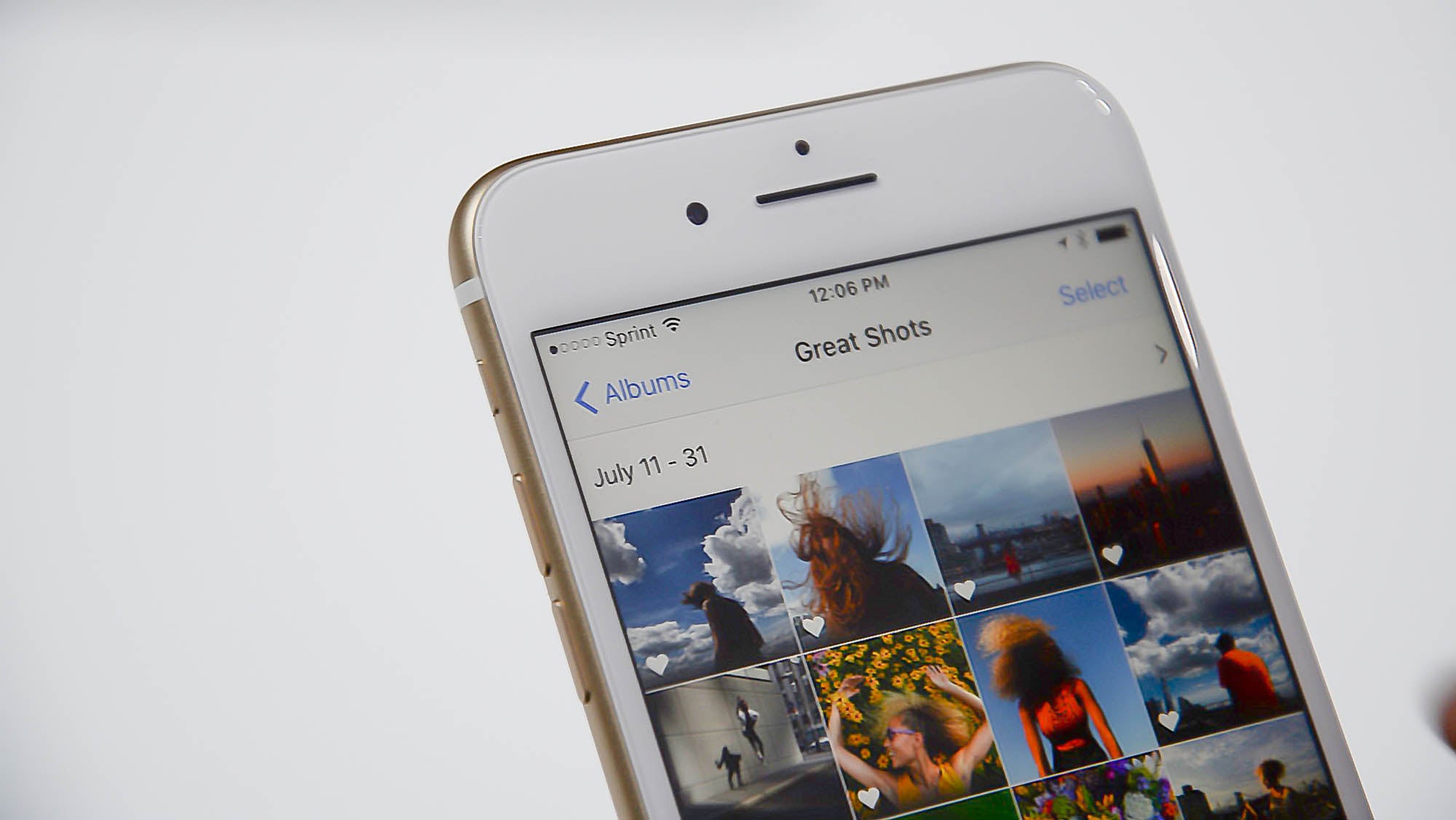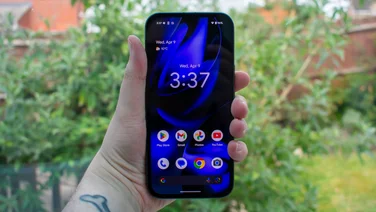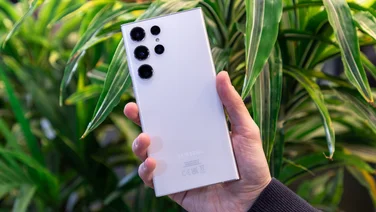To help us provide you with free impartial advice, we may earn a commission if you buy through links on our site. Learn more

So, you’ve still got an iPhone 6, and what’s wrong with that? Although it’s not as powerful as the iPhone 6s, it looks pretty much the same from the outside – and who needs Live Photos anyway? If, like me, you bought your iPhone 6 as soon as it came out, and immediately signed to a 24-month contract, you’re now probably eyeing up the iPhone 7. And for good reason. Unlike the iPhone 6s, the iPhone 7 features a reworked handset design, and comes with all the features of the iPhone 6s, plus a few improvements of its own. So is it worth getting an iPhone 7? Here I’ll analyse everything, from the new features and specs to the camera and overall design, so you can work out whether it’s finally time to ditch your trusty iPhone 6.
iPhone 7 vs iPhone 6: Design
The iPhone 6 was released in September 2014, and the iPhone 7 was released just a few weeks ago, so you’d expect them to look pretty different, wouldn’t you? However, when you put the iPhone 6 next to the iPhone 7, you won’t find many changes. From the front, both handsets look almost identical – minus the slightly tweaked home button – but there are more noticeable changes at the rear of the handsets. The iPhone 7 uses an improved camera compared to the iPhone 6, and the new phone’s chassis bulges out slightly to accommodate it.
READ NEXT: Best smartphones 2016

Apart from that, there’s not much else to notice. The iPhone 7 gets rid of the iPhone 6’s antenna lines, and in addition to a slightly tweaked home button and missing headphone jack – which I’ll get to later – Apple hasn’t changed much.
However, the new iPhone 7 comes in more finishes, and they look much better than those available with the iPhone 6. Space Grey has been killed, and in its place Apple has given us a super glossy “Jet Black” finish and a matte black finish – and both are great. However, the Jet Black iPhone 7 is only available on models with 128GB or more, and Apple says it’s prone to “micro-abrasions,” which isn’t ideal.
iPhone 7 vs iPhone 6: Features
Camera
Although the iPhone 7’s camera only looks slightly different to the one on the iPhone 6, it’s actually one of the places where the new iPhone packs in significant improvements. The iPhone 6 uses a 8-megapixel camera with a f/2.2 aperture, whereas the iPhone 7 uses a 12-megapixel sensor with f/1.8 aperture and optical image stabilisation. As for that dual-lens camera? It only appears on the iPhone 7 Plus, I’m afraid.
The result? The iPhone 7 can give you higher-resolution pictures, and is much better at taking photos in low-light conditions. Optical image stabilisation means your photos are less likely to be blurry, too. The iPhone 7’s shooting superiority also extends to video: Apple’s latest handset can record 4K video at 2160p at 30fps, while the iPhone 6 can only manage 1080p at 30fps.

If you use FaceTime HD or take selfies a lot, you’ll find huge benefits from the iPhone 7’s front-facing camera. Apple’s latest handset uses a 7-megapixel camera for selfie duties, while the iPhone 6 has to make to do with a lowly 1.2-megapixel module. Of course, the iPhone 7 also brings the other features we saw introduced in the iPhone 6s, such as Live Photos – but they’re not exactly standout features.
Audio
The iPhone 6 features one speaker at the rear of the device, but the iPhone 7 comes with two – just like the iPad Pro. Of course, the most interesting thing about the iPhone 7 is its total lack of a headphone jack – something the iPhone 6 retains. Regardless of what you think about headphone jacks, its removal changes how you use the iPhone 7. Those who want to use their existing wired headphones will need to use a free adapter in the iPhone 7, which does look a bit unsightly. What’s more, if you’re listening to music you won’t be able to charge your phone at the same time – unless you buy a dock or accessory. While it’s not a game-changing difference, it is slightly annoying – and something to consider before you hand over your 3.5mm-equipped iPhone 6. On the plus side, the iPhone 7’s Lightning port means it will work with the same docks and cables as your iPhone 6, which is a bonus.
Water resistance
If you ever drop your iPhone 6 in water, it’s usually game over – but the iPhone 7 is both water- and dust-resistant. IP67 certification means the phone will survive being submerged in one metre of water for 30 minutes – but it’s probably best to avoid testing this, since Apple still doesn’t cover water damage in the iPhone 7’s warranty. Still, it’s better than nothing.

Home button
The home button has been a part of the iPhone since the very first handset, but the iPhone 7 gives it an overhaul. The new home button comes with haptic feedback, so although it may feel like a mechanical button, it isn’t one. Apple says the new feature could be used across iOS 10 and third-party apps to add another layer to the UI. The iPhone 7’s new home button is a revelation compared to that of the iPhone 6s. It might look like the home button you’re used to, but pressing it gives you a haptic nudge, just like using 3D Touch. As you’d expect, the iPhone 7 also comes with the faster, improved version of Touch ID.
In contrast, the iPhone 6 comes with a straightforward home button without haptic touch, and it doesn’t benefit from the next-generation Touch ID either, so it’ll take slightly longer to unlock.
iPhone 7 vs iPhone 6: Specs
Processor
The iPhone 7 uses a A10 Fusion processor, and that means it’s by far the most powerful iPhone ever; Apple states the new handset is twice as fast as the iPhone 6’s A8 processor. It’s a quad-core processor, but it’s actually split into two parts. Two high-performance processors handle the compute-intensive tasks, while two efficiency cores take care of lighter loads – giving you better battery life.
Battery life
The iPhone 6 uses a 1,810mAh battery, while the iPhone 7 uses a larger 1,960mAh battery. The new A10 Fusion processor helps to give the new handset a speed boost over the iPhone 6, but it also increases the time between charges. Apple says the iPhone 7 will give you around two hours more than the iPhone 6s, so you should see a noticeable difference if you upgrade from the iPhone 6 to the latest handset.
Display
Both the iPhone 6 and iPhone 7 use a 4.7in screen with a resolution of 750 x 1,334. However, Apple says the new screen is around 25% brighter, and has a wider colour gamut. With both phones side by side, the differences are clear. Colours seem to pop more on the 7, and the screen also appears to be brighter – although it’s still not a match for the exemplary Samsung Galaxy S7’s Super AMOLED screen. The iPhone 7’s display also uses 3D Touch, whereas the iPhone 7 uses 3D Touch – technology first debuted on the iPhone 6s.

Storage and price
The iPhone 7 starts at £599 for the 32GB version, moving to £699 for the 128GB model and £799 for the top-of-the-range 256GB handset. Apple doesn’t actually sell the iPhone 6 anymore, but it has updated the storage options on the iPhone 6s. That means you can now pick up a 32GB handset for £499 or a 128GB handset for £599.
iPhone 7 vs iPhone 6: Verdict
If you’ve already got an iPhone 6s, the iPhone 7 brings a host of incremental upgrades that make for a solid but optional upgrade. However, if you’ve got an iPhone 6, you’ll find the cumulative tweaks offer a significant step up in performance – whether its processor speed, battery life or brand-new features such as water resistance or 3D Touch. There are some good iPhone 7 deals floating around right now, but you should expect to pay around £30-50 per month for the best-value handsets – plus a bit of cash upfront. The only consolation? Your iPhone 6 is worth more than you think; if you take advantage of phone recycling comparison sites such as, you could get up to up to £250 for your two-year- old iPhone.




